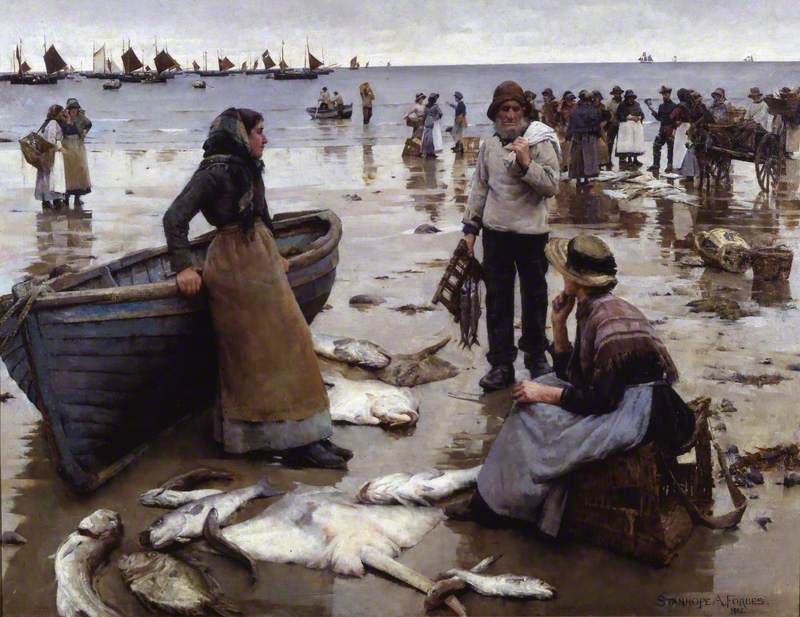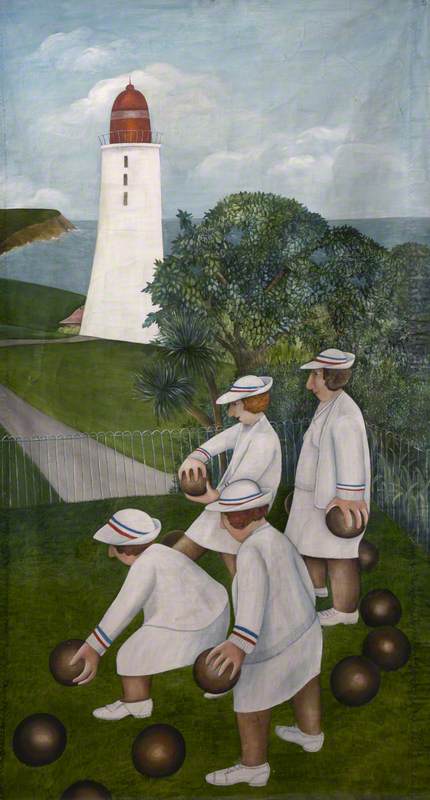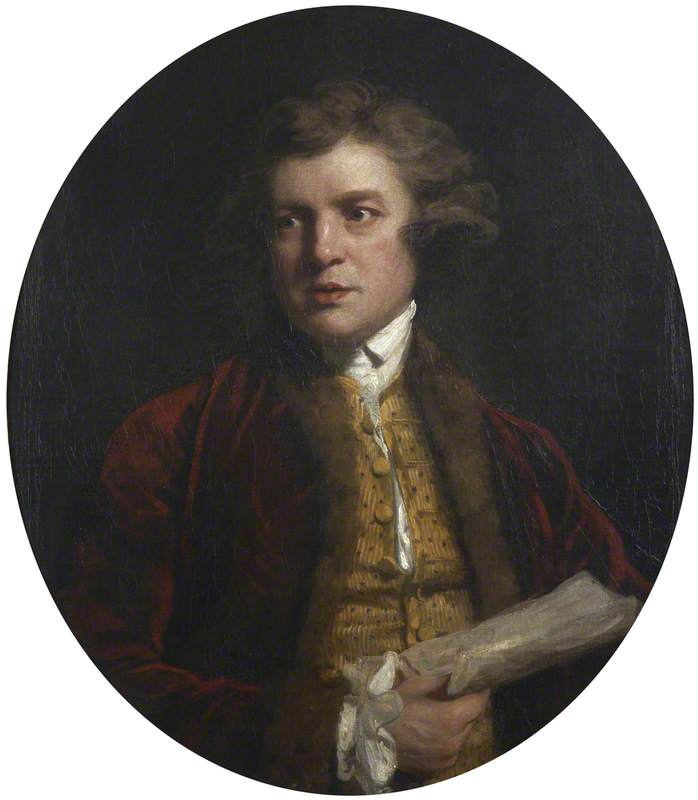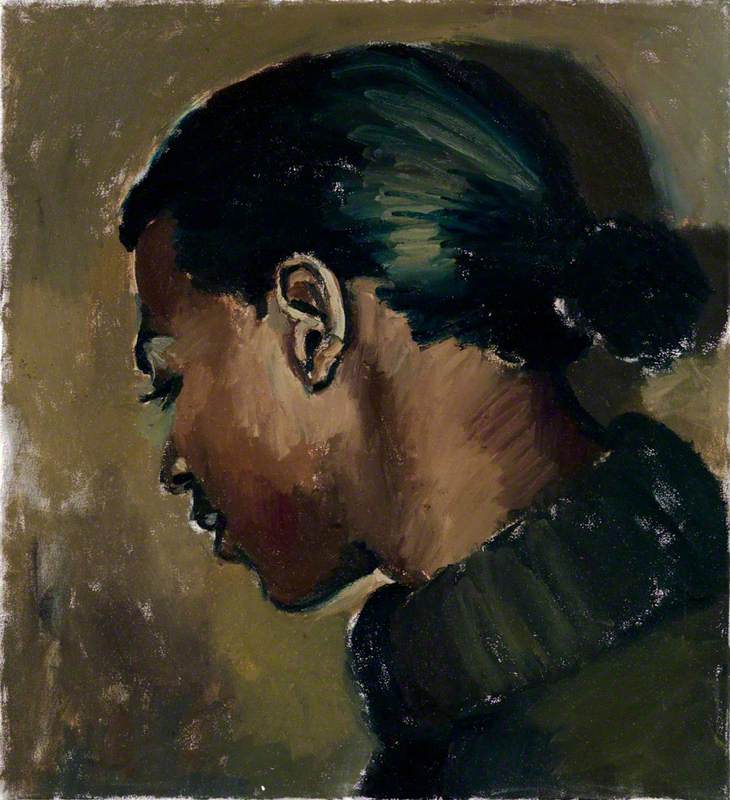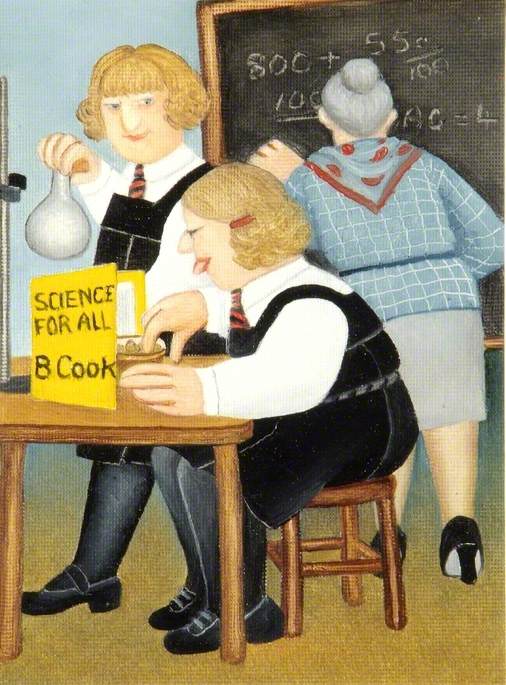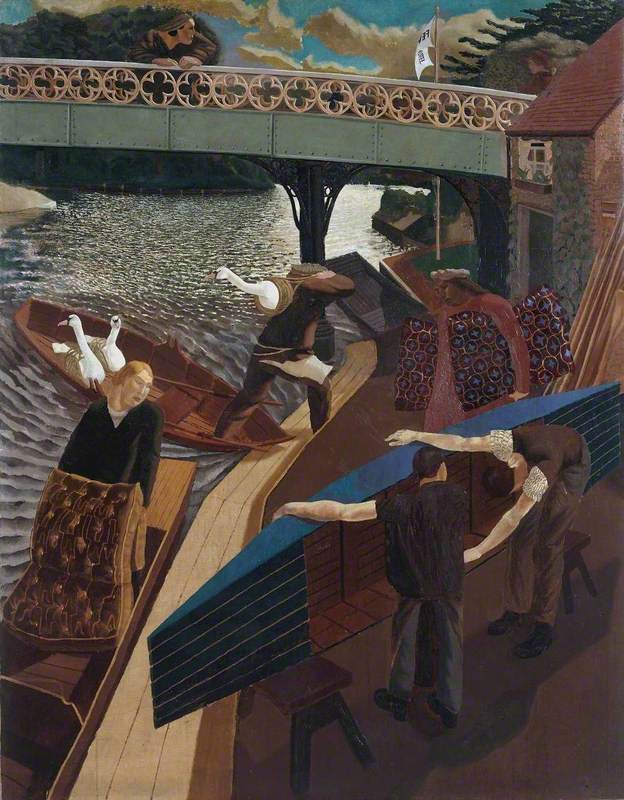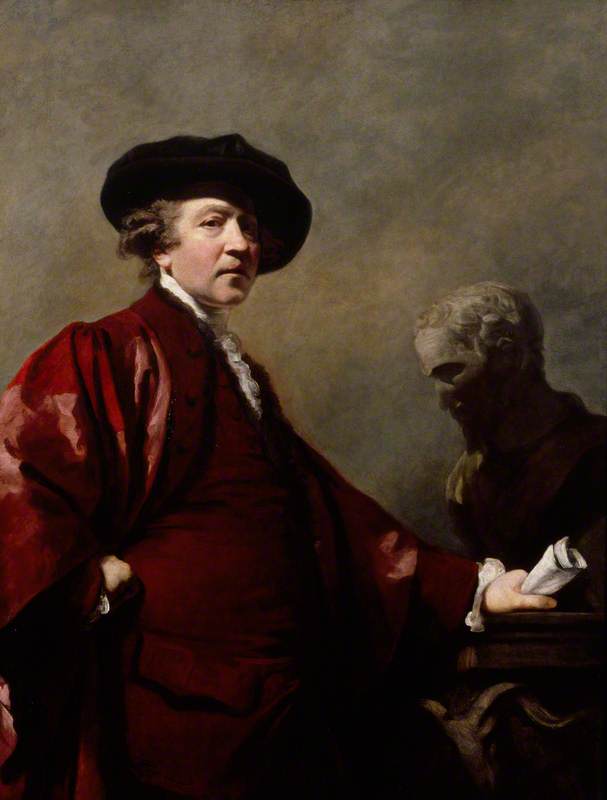The art collections at The Box include more than 15,000 works of art and represent 700 years of creativity and making from the 1400s to the present day. The South West has a rich creative heritage. This is reflected with works by local artists such as Sir Joshua Reynolds and Benjamin Robert Haydon. An ever-growing collection of contemporary art aims to place current societal issues in dialogue with historical ones, including works by Kehinde Wiley, Keith Harrison and Quinlan & Hastings.
Art Unlocked is an online talk series by Art UK in collaboration with Bloomberg Philanthropies. This Curation is based on a talk by Emma Philip, Senior Curator at The Box, on 24th November 2021. You can find a recording at: https://youtu.be/IpRCVP9GIt4
-
A Fish Sale on a Cornish Beach 1885
Within a few weeks of arriving in Cornwall, Forbes had embarked upon this painting, the most-loved of any in The Box’s collection. In April 1884 he wrote to his mother that he was delighted by the visual effects of the wet sand, “anything more beautiful than this beach at low water I never saw... If I can only paint figures against such a background as this shining mirror".
Other painters in the early colony were most supportive of his work. Forbes states that Walter Langley "like everyone here... pronounces it a long way the best picture I have painted." When exhibited at the Royal Academy in 1885, it became the first painting to represent the shared ideals of the Newlyn painters, attracting the attention of critics.
Stanhope Alexander Forbes (1857–1947)
Oil on canvas
H 118.5 x W 154 cm
The Box, Plymouth
-
Hoe Garden Nursery 1955
Spencer was invited by The Friends of Plymouth City Museum & Art Gallery to paint a view of the Plymouth Hoe, to include the iconic Smeatons Tower and Drake Monument. He accepted the commission, but his approach was not what the Friends had been expecting. Far from depicting the grand panorama of Plymouth Sound as centuries of artists had done before him, Spencer took the view from the Corporation’s garden nursery, across the pots of shrubs and flowers destined for the city’s parks. The delight Spencer took in the peeling paint of the cold frames and the wobbly verticals of the bean canes is evident. The nursery had been turned over to food production in the war, so this picture might be said to herald the end of those dark times.
Stanley Spencer (1891–1959)
Oil on canvas
H 67.6 x W 108.4 cm
The Box, Plymouth
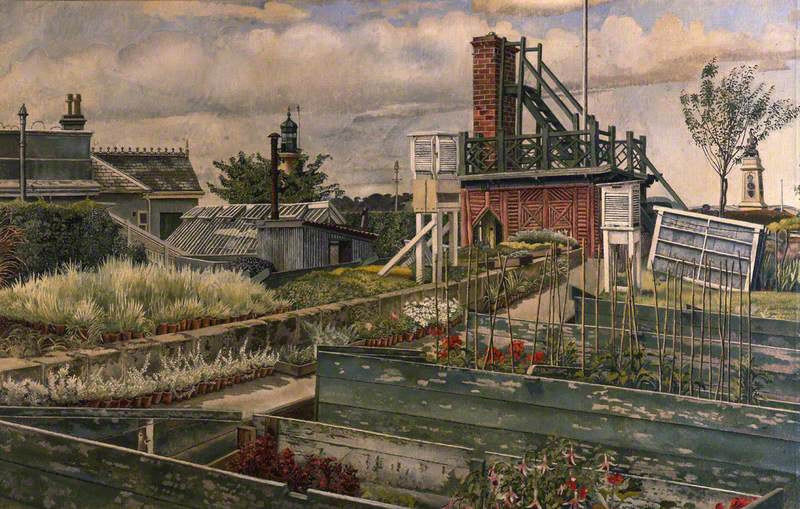 © the estate of Stanley Spencer. All rights reserved / Bridgeman Images. Image credit: The Box, Plymouth
© the estate of Stanley Spencer. All rights reserved / Bridgeman Images. Image credit: The Box, Plymouth
-
Bowlers off the Hoe
Cook and her husband John bought a B&B on Plymouth Hoe in 1968. Beryl ran the B&B during the summers, giving her time to paint over the winter. Cook made use of anything surplus at the B&B, painting on whatever was to hand. This scene is painted on an upside-down roller blind – there are zig-zag seams running up both edges and wooden dowels along the top and bottom.
The varied characters of Plymouth Hoe were an important early source of inspiration for Cook, who would have seen these ladies at the bowling club very near her B&B in Athenaeum Street.
We acquired this painting in 1975 from the artist on the occasion of her first exhibition at Plymouth Arts Centre. From that point onward, her career took off.
Beryl Cook (1926–2008)
Oil on roller blind
H 158 x W 85 cm
The Box, Plymouth
-
Charles Rogers (1711–1784), FRS, FSA
Rogers was a collector of prints and drawings, amassing over 12,000 in his life time. We hold many of these works in our Cottonian Collection at The Box, still in the ornate cabinets commissioned by Rogers for their safe keeping.
Rogers commissioned this portrait from Reynolds in 1777. In 1778, Rogers published Prints in Imitation of Drawings – which included engravings after old master drawings from his own collection and those of his network. Rogers had this portrait engraved by William Wynne Ryland to use as its frontispiece.
Rogers worried that Reynolds had made him look too young in this portrait – he was 66 at the time. Horace Walpole wittily responded that “posterity will not know at what age the likeness was taken”.
Joshua Reynolds (1723–1792)
Oil on canvas
H 73 x W 59 cm
The Box, Plymouth
-
To Tell Them There It's Got To 2013
A woman turns her face away from us, chin down. Is she happy or sad? Is she about to speak? This hanging sense of a story pulls us in. The title provides a nudge toward a narrative that we are at once included in and excluded from – we are never going to know what the story is, and this is the quiet power of Yiadom-Boakye’s paintings.
Assembled by the artist from a variety of sources, the artist describes her subjects as “known to me… they are imbued with a power of their own”.
Yiadom-Boakye is one of Britain’s most important contemporary painters. This piece stands in dialogue with our collection of historic figurative paintings, it is both a descendent of and a counterpoint to our works by Reynolds, Northcote and Sickert.
Lynette Yiadom-Boakye (b.1977)
Oil on canvas
H 60 x W 55 cm
The Box, Plymouth
